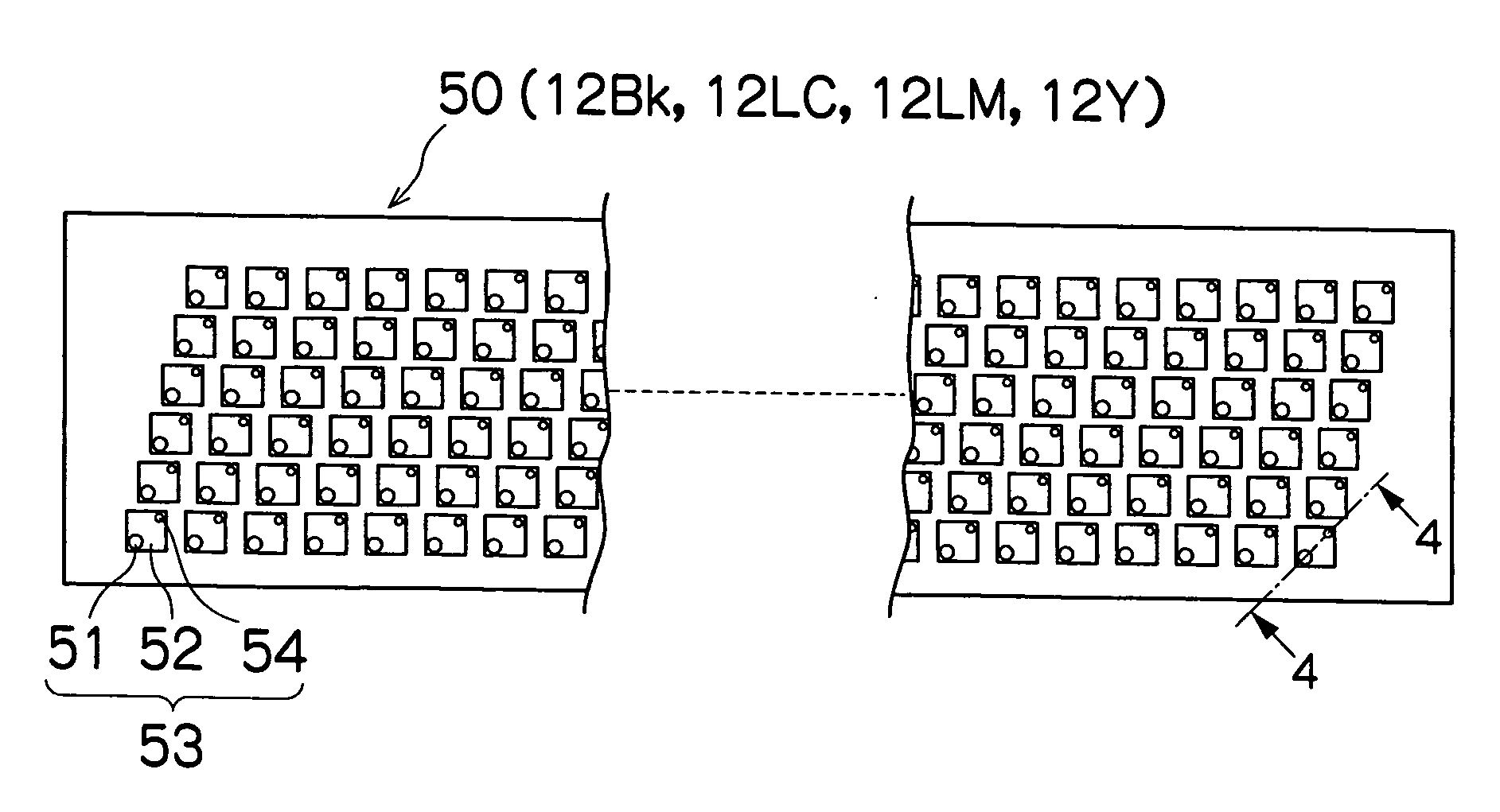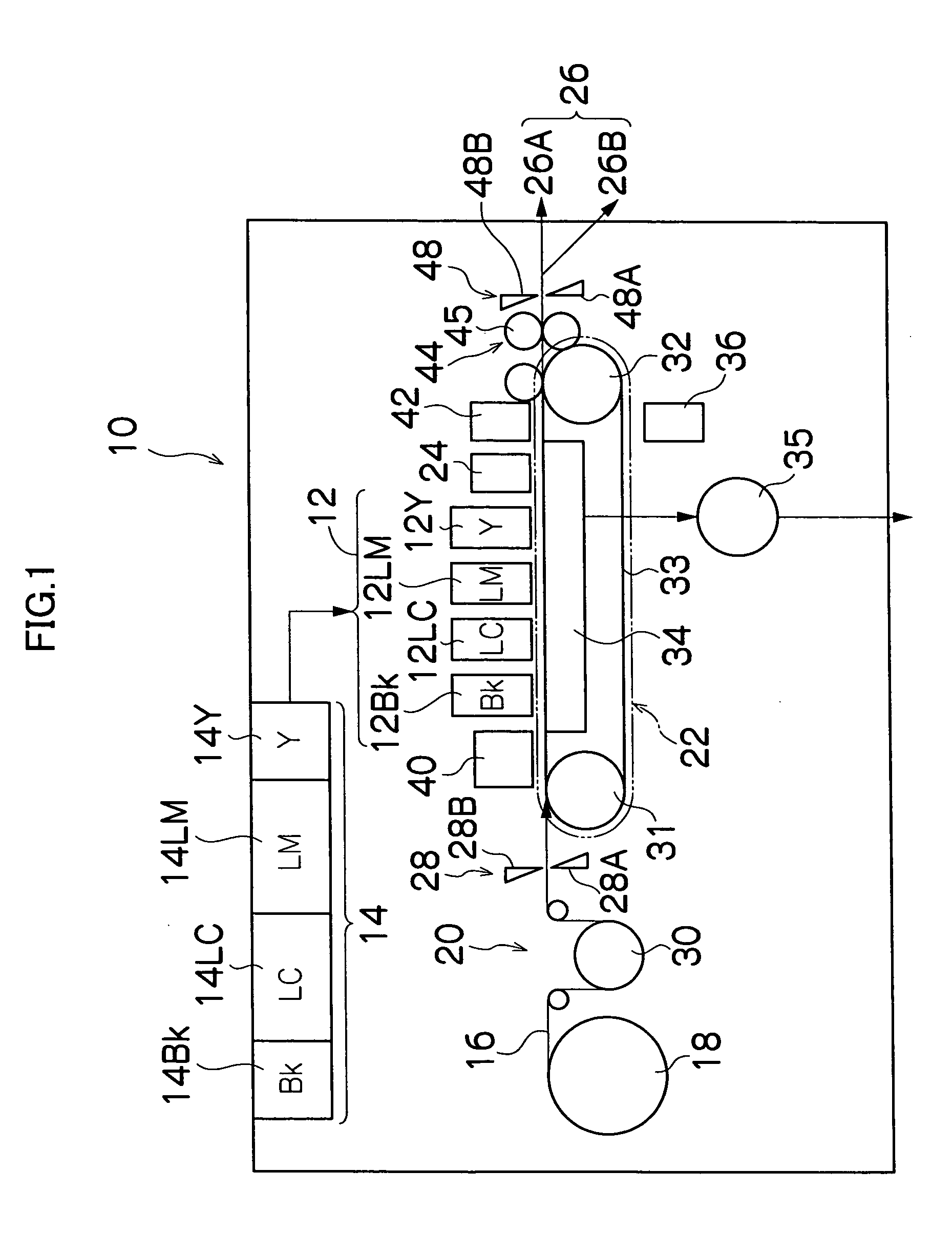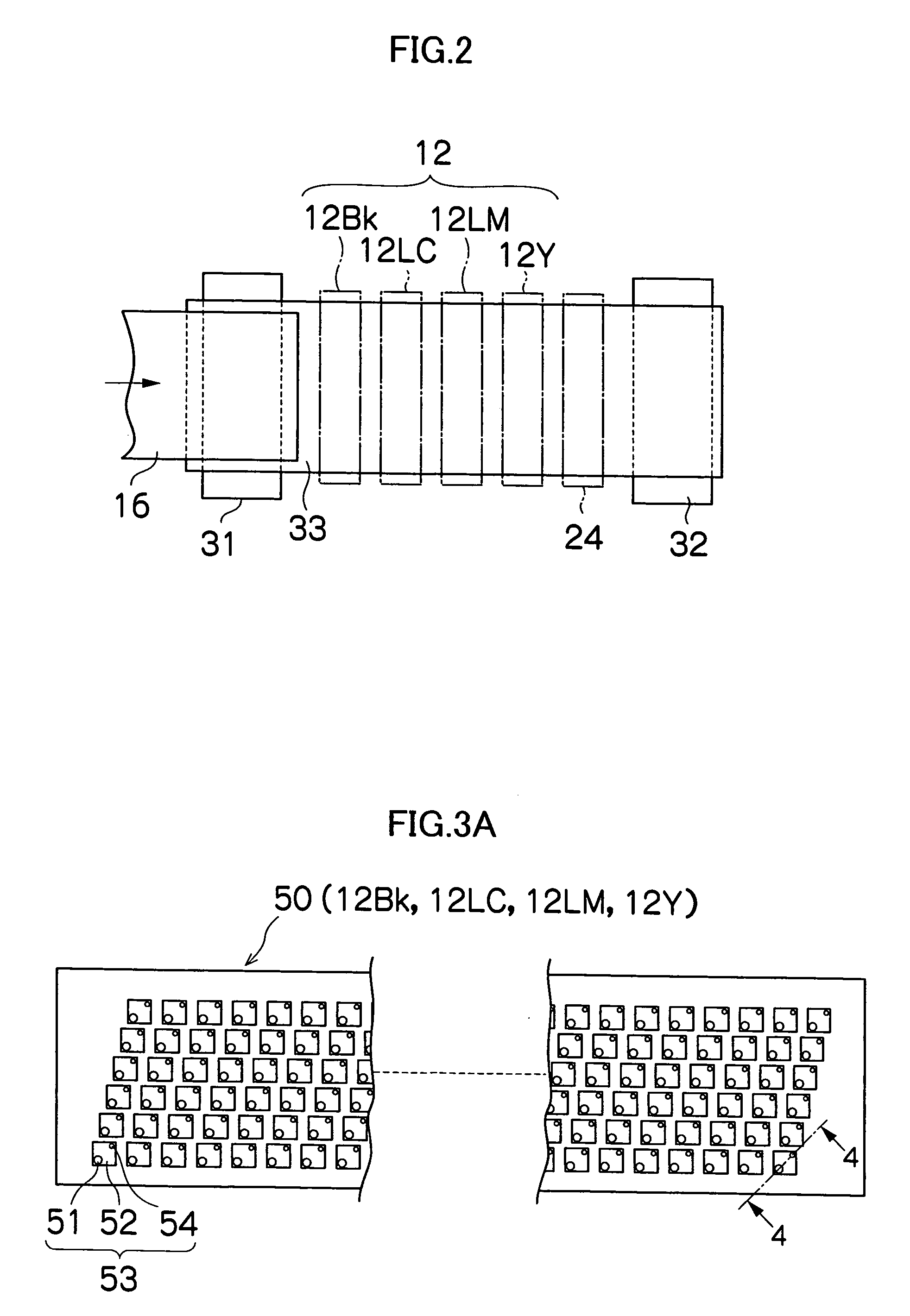Image forming apparatus and method
a technology of image forming apparatus and head unit, which is applied in the direction of measuring apparatus components, instruments, printing, etc., can solve the problems of increasing the possibility of ink discharge problems in the head, shortening the printing time, and increasing the total number of nozzles, so as to reduce the number of head units, reduce the number of coloring materials, and reduce the number of types of coloring materials.
- Summary
- Abstract
- Description
- Claims
- Application Information
AI Technical Summary
Benefits of technology
Problems solved by technology
Method used
Image
Examples
Embodiment Construction
General Configuration of an Inkjet Recording Apparatus (Printer)
[0060]FIG. 1 is a general schematic drawing of an inkjet recording apparatus according to an embodiment of the present invention. As shown in FIG. 1, the inkjet recording apparatus 10 comprises: a printing unit 12 having a plurality of print heads 12Bk, 12LC, 12LM, and 12Y for ink colors of black (Bk), light cyan (LC), light magenta (LM), and yellow (Y), respectively; an ink storing and loading unit 14 for storing inks of Bk, LC, LM and Y to be supplied to the print heads 12Bk, 12LC, 12LM, and 12Y; a paper supply unit 18 for supplying recording paper 16; a decurling unit 20 for removing curl in the recording paper 16; a suction belt conveyance unit 22 disposed facing the nozzle face (ink-droplet ejection face) of the print unit 12, for conveying the recording paper 16 while keeping the recording paper 16 flat; a print determination unit 24 for reading the printed result produced by the printing unit 12; and a paper ou...
PUM
 Login to View More
Login to View More Abstract
Description
Claims
Application Information
 Login to View More
Login to View More - R&D
- Intellectual Property
- Life Sciences
- Materials
- Tech Scout
- Unparalleled Data Quality
- Higher Quality Content
- 60% Fewer Hallucinations
Browse by: Latest US Patents, China's latest patents, Technical Efficacy Thesaurus, Application Domain, Technology Topic, Popular Technical Reports.
© 2025 PatSnap. All rights reserved.Legal|Privacy policy|Modern Slavery Act Transparency Statement|Sitemap|About US| Contact US: help@patsnap.com



